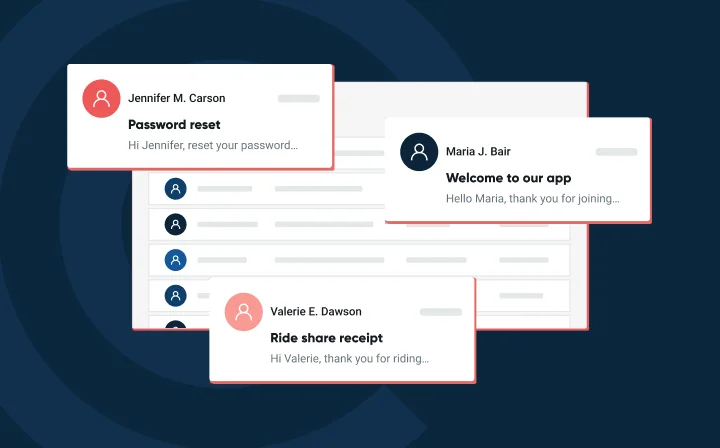The European Accessibility Act: What you need to know


Accessibility matters. Whether you’re a business leader or a software developer, ensuring your products and services are accessible isn’t just good practice – it’s also now a legal requirement across the European Union with the European Accessibility Act (EAA), a game-changing directive designed to create a more inclusive digital experience. But it’s not just for European based businesses; in addition, this is relevant for all businesses offering their products or services to the EU.
The EAA, or Directive (EU) 2019/882, is a sweeping piece of legislation that mandates common accessibility standards across the EU. Its goal? To make products and services more accessible to persons with disabilities, fostering inclusivity by eliminating inconsistent accessibility rules among EU member states.
At its core, the EAA is about creating an inclusive society. It empowers individuals with disabilities by enabling independent living, and participation in society on equal terms. On a macro level, it harmonizes accessibility requirements across the EU, making cross-border trade smoother for businesses.
The EAA aligns with the United Nations Convention on the Rights of Persons with Disabilities (UN CRPD) in defining persons with disabilities. But its benefits extend beyond this group. Pregnant women, the elderly, and travelers with temporary physical limitations will also see improved access to essential services.
The directive casts a wide net, covering both products and services. Highlights include:
The EAA applies to a broad range of industries that offer products and services within the EU market, even if the provider is based outside the EU. Here’s a breakdown of who’s directly affected:
Penalties vary by country but may include steep fines (reported up to roughly three million euros), removal of products/services from the market, and suspension of the right to do business.
Yes, many service-related EAA requirements exempt microenterprises with fewer than 10 employees and under €2M annual turnover. However, manufacturers of covered products may still have obligations. ‘Undue burden’ exemptions can also apply case-by-case.
Yes. Any provider offering covered products or services in the EU must comply, regardless of where they are based. For example, airlines outside the EU with departures from the EU are in scope.
The EAA acknowledges that smaller businesses might face challenges in meeting all its requirements.
Microenterprises (typically those with fewer than 10 employees and annual turnover under €2 million) may be exempt from certain product and service obligations. However, if a product is manufactured for the general public – such as smartphones, ATMs, or payment terminals – the manufacturer may still need to meet basic accessibility requirements.
Businesses claiming a “disproportionate burden” exemption must document their justification and make it available to national authorities upon request.
The EAA outlines specific accessibility features that businesses must incorporate:
These requirements ensure that your products and services are perceivable, operable, and understandable. A statement or online notice of how you comply with the act may also be necessary.
Under the EAA, most organizations must publish an accessibility statement describing how their product or service meets accessibility requirements. This statement should include:
You can find templates and examples of accessibility statements from the European Commission and W3C’s Accessibility Statement Generator.
To show compliance with the European Accessibility Act, organizations should align their products and services with these key standards:
As of June 28, 2025, all products and services must comply with the EAA’s requirements. National authorities across EU member states will oversee enforcement through market surveillance, investigations, and penalties for non-compliance.
The consequences of failing to meet EAA requirements vary by country but can include:
Each EU member state designates a national authority responsible for enforcement – examples include Germany’s Federal Network Agency (BNetzA) and France’s Ministry for the Economy (DGCCRF). Businesses should familiarize themselves with their applicable supervisory authority.
The EAA isn’t just a checklist—it’s an opportunity. By embracing accessibility, you’re opening your doors to a wider audience, improving customer satisfaction, and aligning with global standards.
“As we are transcending more and more into a digital world, the importance of this accessibility act is becoming even more relevant. Many users are opting to use online sites and applications instead of the physical domain (a great example is in the banking industry where over 70% of all bankers are using digital banking applications instead of in bank experiences. So now more than ever, people with disabilities need to have guaranteed access to this digital world, much like already in place in the physical world.”

| Legislation | Scope & requirements | Who must comply | Compliance deadline |
|---|---|---|---|
| European Accessibility Act (EAA) | Requires online trade in goods & services to be accessible to consumers. Must be implemented in national legislation. | All EU member states | June 28, 2025 |
| EN 301 549 | EU Web Accessibility Directive requiring WCAG 2.1 AA compliance for public sector websites & apps. | All public sector websites & mobile apps in the EU | Ongoing |
| Germany – BGG & BITV | BGG covers accessibility in federal agencies & services. BITV mandates accessibility in IT & communication technology. | Public institutions, agencies, suppliers, and contractors | Ongoing |
| Germany – BFSG | Requires accessible online stores & equal access for people with disabilities. | Businesses selling online in Germany | June 28, 2025 |
| USA – ADA, Section 508 | Prohibits discrimination against people with disabilities in digital spaces & mandates IT accessibility. | Public & private entities, employment, education, transportation | Ongoing |
| Canada – Accessible Canada Act (ACA) | Ensures access to goods, services, employment, and digital content. Requires WCAG 2.0 AA compliance | Private/non-profits with >50 employees & all public sector organizations | Ongoing |
| Canada – AODA (Ontario) | Requires goods, services, and digital communication to be accessible. | Public & private sector organizations in Ontario | Ongoing |
| Canada – AMA (Manitoba) | Mandates accessibility of websites, mobile apps, and digital content. | Public & private sector organizations in Manitoba | Ongoing |
| Canada – Nova Scotia Accessibility Act | Requires accessibility in services, ICT, websites, and mobile apps. | Public & private sector organizations | Ongoing |
| UK – Equality Act 2010 | Prohibits discrimination & mandates accessibility in digital services. | Public & private sector organizations | Ongoing |
| UK – Public Sector Accessibility Regulations 2018 | Requires WCAG 2.1 AA compliance & an accessibility statement. | UK public sector bodies | September 23, 2018 |
| Israel – Equal Rights for People with Disabilities Act 2013 | Requires websites & apps providing services/info to be accessible under WCAG 2.0 AA. | Public & private websites & apps | Ongoing |
| Japan – JIS X 8341-3 | Requires accessibility in government websites & ICT. Inspired by WCAG 2.0 but not legally binding. | Government institutions & public services | Ongoing |
| Australia – Disability Discrimination Act 1992 | Mandates WCAG 2.0 AA compliance for web accessibility. | Australian government & service providers | Ongoing |
| Italy – Stanca Act | Requires WCAG 2.0 AA compliance & 22 technical requirements. | Public & government agencies, regional companies, transport & telecom | Ongoing |
| India – RPD & Government Guidelines | Ensures ICT accessibility in public & private sectors. | Government agencies & private sector organizations | Ongoing |
| France – Law № 2005-102 Article 47 (RGAA) | Mandates public digital communication accessibility, based on WCAG 2.1 AA. | Public digital communication services in France | Ongoing |
| Brazil – L. 10.098 & Ordinance 5.296 | Requires accessibility in government websites & ICT. | Government agencies & service providers | Ongoing |
| Spain – Law 34, Royal Decree 209 | Requires public admin websites to follow WCAG AA. | Public institutions, government-funded websites | Ongoing |
The EAA is here to stay, and businesses have a window to adapt. Start early to make compliance less daunting. Remember, accessibility isn’t just about meeting legal obligations—it’s about building trust and inclusivity in every interaction.
Stay ahead of the curve and make your emails and digital services accessible. Mailgun is here to help. Let’s build smarter, more inclusive communications together.